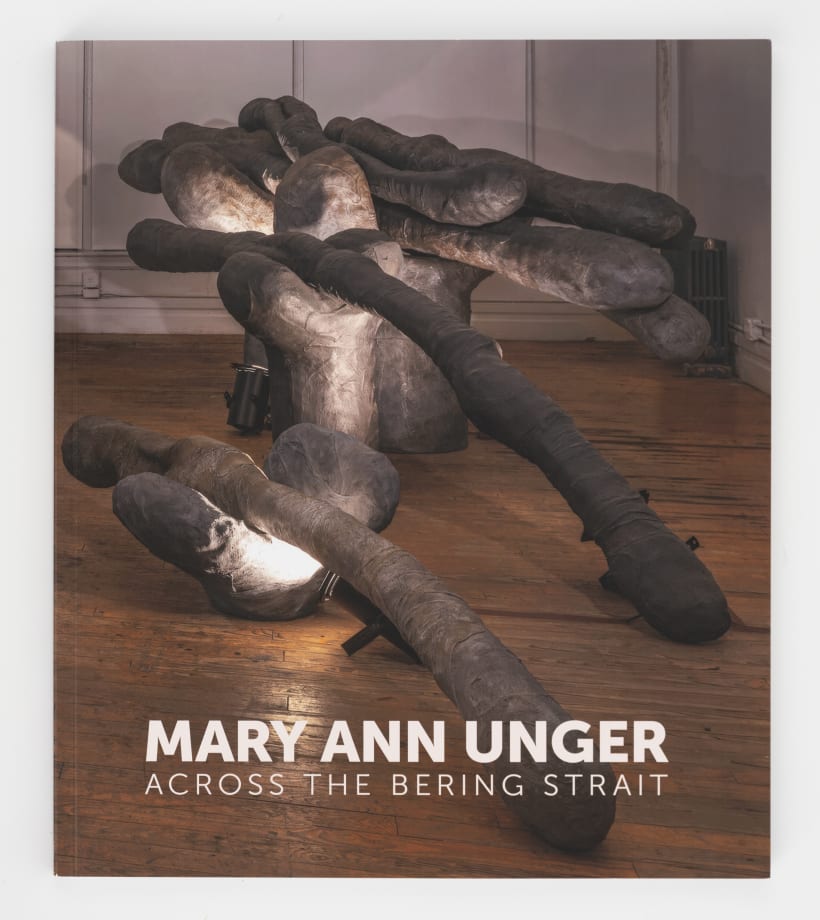Excerpt from Pilgrims' Progress: Mary Ann Unger's Across the Bering Strait
By Glenn Adamnson
Unger’s whole career was, in a word, provisional, a fact that makes the scale of her achievement all the more impressive. Whether or not the material constraints she faced had any part in it, contingency became then a creative parameter; it was, for her, a whole aesthetic. Most of her sculptures explore the theme of mutual dependency. They huddle together for protection, lean against a wall, prop themselves up. Quite in opposition to her public artworks, they are radically site-unspecific. Wherever they are placed, it is as if they were only resting there, on their way to somewhere else.
Unger’s hard-won path eventually led to Across the Bering Strait (1992–1994, Figure 1, Plate 11), her most ambitious and important work, and one that remains provocative some thirty years after its creation. She described it as “an abstract sculpture about migration…always on the theme of movement in one direction, always suggesting people walking, carrying, in limbo, but moving towards a goal.” It is as much a work of choreography as a piece of installation art. The constituent forms, arranged into clusters, are alternately pliant and cumbrous; some stand staunchly from the ground plane, serving as a crutch on which other elements rest, much as one dancer might lift another. When it was first shown at the Trans Hudson Gallery in 1994, this theatrical implication was enhanced by uplights positioned below the sculptures and an ambient soundtrack of “Tibetan ritual chants, eskimo vocal games, and Inuit Indian chants.” As Unger noted, “The sculpture is inherently dramatic, but with the addition of music, the pieces become players in a performance.”
Excerpt from Mary Ann Unger's Microcosmic Monuments of Life
By Jess Wilcox
While unconditionally dedicated to sculptural practice, Unger was clearly influenced by scientific ideas and imagery, namely micro- and telescopic views of the biological or “natural” world. The work has been variously described as primordial, organic, bodily, and environmental. Biomorphic is perhaps the most succinct description. In interviews the artist proposes that her family of engineers and her aborted college study of biochemistry impacted her art. The remnants of these are visible in her uncanny scale shifts; modular, cellular, and radial compositions; and her dual drawing/sculpture practice. These influences are also evident in preparatory sketches, technical drawings, and her journal entries which range from references to DNA and cancer to theories of evolution and universal metaphysical inquiries.
Essays by Glenn Adamson and Jess Wilcox
Designed by Mark Robinson
Published by Berry Campbell
Printed by GHP Media, Connecticut

